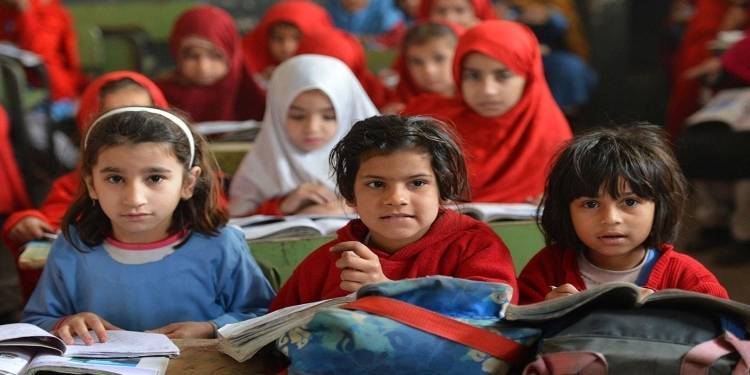
We hardly see reports in newspapers or on TV channels about the psychological impact of militancy on children, even though attacks on schools in Khyber Pakhtunkhwa (KP) and the newly merged districts of Ex-Federally Administered Tribal Areas (FATA) remain alarmingly common. Since there are no reports on the emotional trauma children are enduring, society fails to recognise the need for remedies to ensure their emotional wellbeing. This neglect could lead to these children developing serious psychological issues, potentially making them vulnerable to exploitation by terrorist organisations.
Children in the Pashtun belt have borne the brunt of decades of conflict. Beyond the hundreds who were killed or maimed due to militancy, millions suffer psychologically from prolonged exposure to violence and state-sponsored indoctrination. This indoctrination infiltrates schools, religious institutions, media, and even the homes where they grow up.
"These children are stuck in an endless cycle of trauma and neglect," says Dr. Ayesha Khan, a clinical psychologist based in Peshawar. "We need to address the issue head-on, but unfortunately, the silence around their mental health is deafening."
Children are left at the mercy of powers that rob them of their childhood. Understandably, society has grown desensitised to this crisis, with government agencies taking minimal steps to address the needs of these children. The issue rarely becomes a topic for talk shows, which are often driven by ratings rather than a genuine understanding of the gravity of the problem.
In a conversation with Dr. Farooq Khan, a respected figure in deradicalisation efforts who was tragically martyred, he shed light on the challenges of rehabilitating young militants. His project in Swat aimed to rehabilitate around 150 young suicide bombers under the age of 18, previously indoctrinated by the Swati Taliban.
The closed Pashtun culture, further restricted by the Wahhabi influence since the Soviet invasion of Afghanistan, leaves little room for entertainment or self-expression. This cultural suffocation creates a fertile ground for radical ideologies.
“The primary challenge was earning their trust," he told me just days before his death. "Many of these children were deeply brainwashed and viewed teachers or counselors with suspicion, often questioning whether we were part of a larger conspiracy against their beliefs.”
Dr. Farooq identified three key trends: 95% of these children came from government and private schools; many were indoctrinated by teachers of Islamic Studies or Arabic Studies; and, in most cases, they lacked a stable father figure. One boy expressed his struggle with returning to normalcy after escaping the militants. “I wanted to shave my beard and look like a regular boy, but I was scared of how my community would perceive me,” he said.
A former suicide bomber I interviewed shared a harrowing story of his journey to militancy. "I wasn’t happy with my life. It had nothing to do with faith or an afterlife. I just wanted to escape a life filled with pain," he explained. When he began to notice the hypocrisy of his militant leaders, who smoked hashish and abused their recruits, he took the first opportunity to flee.
His experience underscores that the issue is not solely religious indoctrination but also the environment these children grow up in. Poverty, violence, and a lack of opportunities make them easy prey for militant recruiters. "The problem isn’t just the Taliban’s propaganda machine but also the lack of alternatives for these children to envision a hopeful future," notes journalist Rahim Shah.
Taliban propaganda thrives on manipulating the narratives of pain and revenge, often utilising the Urdu press and media platforms. Alarmingly, some intellectuals and politicians amplify this propaganda, indirectly aiding militants. "We need to focus on the intellectual supporters of militancy,” argues political analyst Sardar Mehmood. “These individuals justify acts of terror by framing them as reactions to perceived injustices.”
The closed Pashtun culture, further restricted by the Wahhabi influence since the Soviet invasion of Afghanistan, leaves little room for entertainment or self-expression. This cultural suffocation creates a fertile ground for radical ideologies.
To combat this, fast-track economic development, political engagement, and progressive education are crucial. Establishing avenues for the youth to channel their energy and creativity can help break the cycle of violence. In Swat, initiatives such as youth sports leagues and art workshops have shown promise in keeping young people engaged and away from extremist influences.
As Nobel Laureate Malala Yousafzai said, “One child, one teacher, one book, and one pen can change the world.” We must prioritise education and emotional support for the children of the Pashtun belt. Without intervention, we risk losing an entire generation to the shadow of militancy. It is time to love and invest in our children—to allow them to dream beyond the confines of violence and despair.
Former Prime Minister of Israel, Golda Meir’s words resonate deeply in this context: “We will have peace with the Arabs when they love their children more than they hate us.” In the Pashtun belt, peace will come when we love our children enough to protect them from the cycle of hate and violence.

